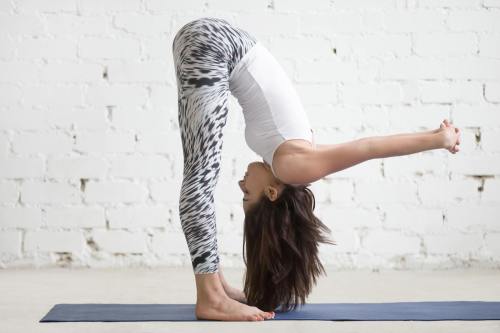I touched my toes for the first time, and it had nothing to do with how flexible I am
Wondering how to touch your toes? The pros at Body Evolved—the go-to physical therapy spot for SoulCycle and Barry's bootcamp teachers—are here to help.

I am 27 years old, and until last week, I had never touched my toes in a forward fold. In my childhood dance and gymnastics class, I could never quite reach those 10 little piggies, and not a whole lot has changed now that I’m an adult who goes to yoga twice a week. Sure, I can contort into dancer’s pose and bird of paradise, but ask me to hinge toward the floor, and we’ve got a problem on our hands.
So when Corinne Croce and Dariusz Stankiewicz of Body Evolved Studio—a brand new upscale physical therapy destination opening this week in New York City—told me that they could get me to touch my toes in 2 sessions, I practically laughed in their faces. “I’ve been trying to do this for 2.5 decades—there is no way you can fix it in 2 hours,” I scoffed during my first appointment with Croce. Yet, she swore that my hands would be on the ground in no time.
“A person’s ability to reach up and down is much more than just a testament to their flexibility,” Croce explains. “Of course flexibility plays a role in how much movement can be created at each consecutive joint involved, however more often than not, the inability to touch ones toes is caused by a dysfunction with the fundamental pattern of hinging at the hips.”
Most of us refer to this as tightness, but it’s actually more complicated than that. “The ‘tone’ and tension being expressed in the hamstrings, calves, or lower back which feels like ‘tightness’ is actually a protective mechanism of the brain not trusting the movement itself due to the lack of instability sensed,” she says. In other words, not hinging enough at the hips can feel like intense tightness in the calves and hamstrings. “The brain sends a message to your muscles to lock down to hinder you from doing a movement that feels unstable.”
According to Croce, instead of working on flexibility to fix the problem, we were going to have to work on fixing the neurological tension and correcting the hip hinge pattern that was preventing me from making it all the way down to my toes.
My first appointment at the (gorgeous) studio in downtown Manhattan was with Croce, who focuses on manual therapy. She had me lie on a table, where she started performing the active release techniques, loosening some of the tension that was happening in my hip flexors. TBH, it was pretty intense (so much so that I actually felt nauseous afterward), but the next day I did feel a pretty big difference.
All of this was preparation for my second appointment with Stankiewicz, who coaches athletes, including many SoulCycle instructors, through functional strength training. Three days later, we put my newly adjusted hips to the test. He walked me through a series of drills called the “toe touch progression,” which was meant to break the “faulty patterning” in my movements and rebuild it from the ground up.
One of the moves involved holding a rolled up towel in between my thighs with my feet raised on top of another folded towel and very slowly folding down to the floor. I was meant to concentrate on pressing each segment of my spine, and squeezing the towel when things started to feel tight. Let me tell you: It was much harder than it sounds. Another had me doing a similar movement, but on the floor—a la a straight leg sit-up—instead of standing.
“The set of drills in this progression are meant to mess with the vestibular system to improve and synchronize your hip hinge pattern with your neuromuscular system, all the while challenging balance, proprioception and controlled breath work,” he explains. “When the goal of breaking the dysfunctional patterning and a proper hip hinge is achieved then the body will use the muscle length that was always present and allow for a full toe touch movement.”
At the end, I (nervously) hinged forward, and for the first time ever in my life, I grabbed hold of my toes…. And then, I proceeded to do it approximately 100 more times over the course of the next 5 days for anyone who would watch.
In addition to hacking your hip mobility, these two yoga poses can also help you plant your hands and feet on the floor at the same time. And if increased flexibility is what you’re after, here are even more stretches that can help.
Sign Up for Our Daily Newsletter
Get all the latest in wellness, trends, food, fitness, beauty, and more delivered right to your inbox.
Got it, you've been added to our email list.










